Australia’s champion racehorse Phar Lap would have turned 90
PHAR LAP had four legs, as did every other horse. But there was something about him, something almost human and at the same time superhuman. And if still alive, he would have turned 90 today.
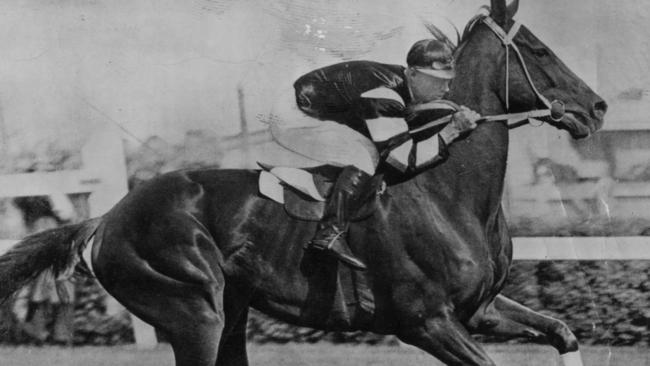
VIC News
Don't miss out on the headlines from VIC News. Followed categories will be added to My News.
HE had four legs, as did every other horse, and he didn’t always win.
But there was something about him, something almost human and at the same time superhuman.
And there was something about the man behind the hand that fed him, led him, caressed him, hosed him down, fussed over him . . . something that set him aside from other horsemen.
READ MORE: THE DAY PHAR LAP WON THE WORLD’S RICHEST RACE
Together they forged a unique partnership, one that transcended sport and became part of a nation’s folklore — the horse called Phar Lap and the humble stumblebum cum trainer Tommy Woodcock.
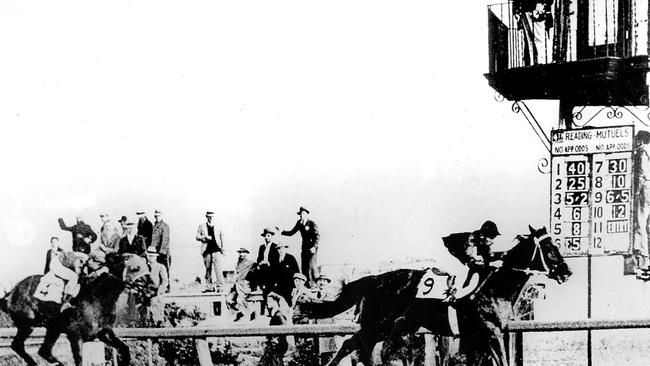
But it was far from love at first sight. The fresh-faced former jockey considered the ungainly New Zealand colt to be “skinny, scraggy with warts all over his face”.
But, by the spring of ‘29 — the dawn of the Great Depression — Phar Lap had furnished into a magnificent looking animal, albeit one with a modest racing record, having triumphed just once the previous season.
Woodcock, who never struck a horse, called him “Bobby boy”, fussed over him, sneaked him sugar cubes.
It got to the stage where the giant chestnut would rip the shirt off other stable workers and wouldn’t budge for them. He would eat only for Tommy. Wisely, Sydney trainer Harry Telford decided to offer Woodcock a permanent job.
Telford, a keen student of bloodlines, had been flat broke when he became obsessed with lot 42 — with a pedigree that threw back to Melbourne Cup great Carbine — at the Trentham yearling sales of 1928.
Somehow he managed to convince Sydney-based American businessman Dave Davis to go to 200 for the son of Night Raid out of Entreaty. As it was, they got him for 160 guineas . . . mainly because the colt was so plain and awkward.
So unimpressed by his looks was Davis that on first sight — he called it a kangaroo dog — he refused to pay for the colt’s training and upkeep.
Undeterred, Telford struck a deal; he would take up a lease on the horse for three years for a two-third share of prize money.
Three unplaced runs were a less than impressive start for Phar Lap, but Telford knew what he was doing.
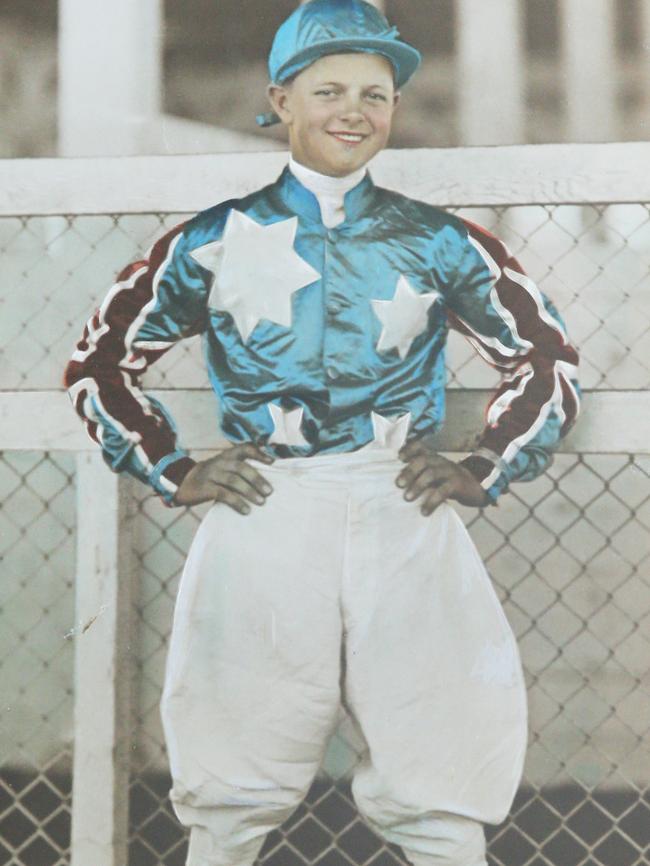
On April 27, in the Rosehill Maiden Juvenile Handicap, Telford told Davis to back his horse, and back it he did, from double figures to 7-1.
Phar Lap did the rest, reeling in a field of 20 rivals. Telford paid his bills, Davis started smiling.
But not even they dared to dream what was to come. Phar Lap was gelded, then, after three unplaced runs first up as a three-year-old, he finally got it all together.
Dazzingly athletic and gifted with enormous staying power, he strung together three big wins in the feature Sydney races, including a three-length Derby win in record time, amassing close to 10,000 in prize money in the process.
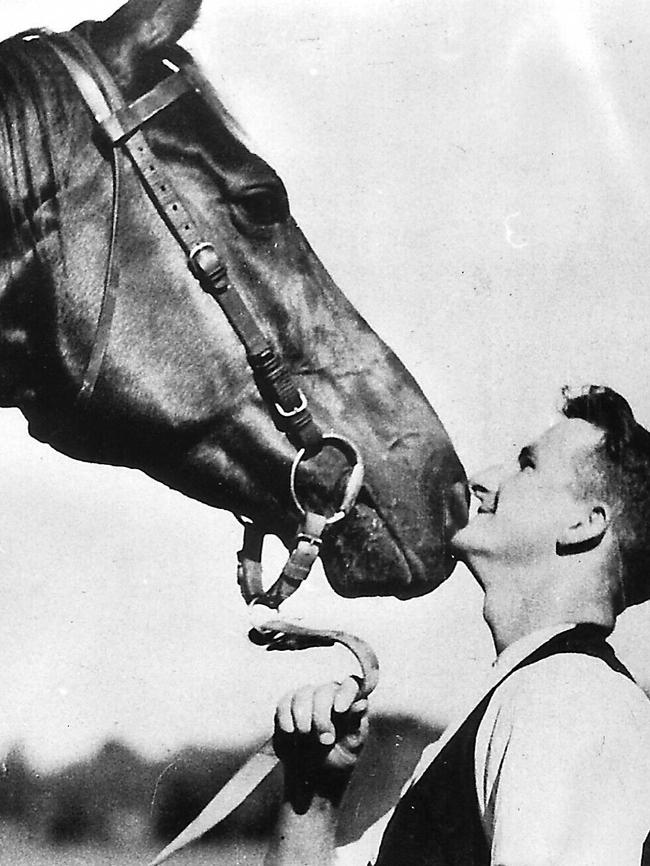
When Telford told Woodcock he would be accompanying the horse for a crack at the Melbourne Cup, Woodcock recalled in his biography: “Aw gawd, I couldn’t get me clothes on quick enough.
“Phar Lap in them days was, I suppose, he’d be one of the best horses in the world.”
Despite not travelling well the horse was still much too good for his rivals in the Victorian Derby, setting another record.
But it was to be a different story in the Melbourne Cup. The horse started favourite but resented his new jockey, veteran lightweight Bobby Lewis, and in the words of Woodcock “he pulled and reefed and pulled and reefed” before eventually running on again late for third.
But the smarties were in no doubt. A new star was born, destined for greater galloping glories.
Phar Lap stamped his authority on his return to the track. He chalked up four wins in Melbourne before winning the AJC St Leger at the odds of 1-20.
The bookies refused to put up any price at all for the wfa Cumberland Stakes four days later.
To top off the week the big fella clocked an Australian record in the AJC Plate, winning by 10 lengths eased down.
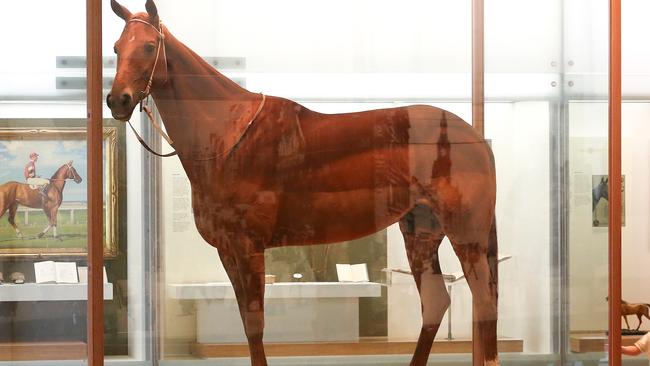
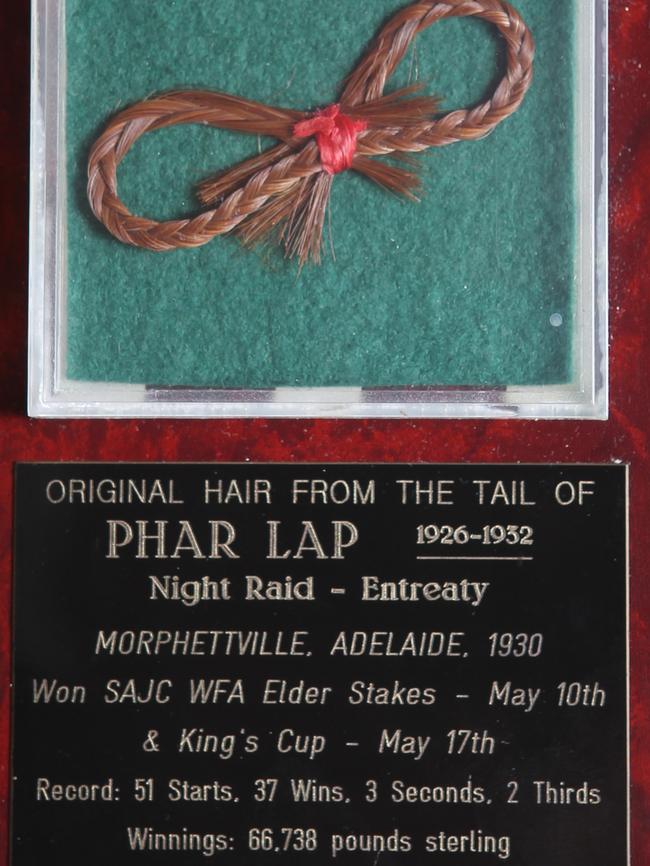
But it was the spring carnival of 1930 that stamped the horse’s greatness and won the hearts of punters and non-racing people all over Australia.
He won four times in Sydney, beating Nightmarch each time and so frustrating that horse’s connections that they sent the horse back to Wellington rather than face Phar Lap’s rump again in Melbourne.
That left only Amounis to seriously rival the red champ in the Caulfield Cup, but bookmakers considered there was no rival and made Phar Lap a short-priced favourite to win the Caulfield-Melbourne Cup double . . . and that got Davis thinking about a way to fleece the bookies.
As he did the previous year, Woodcock travelled by train with Phar Lap to Melbourne, but this time Telford told Tommy to take the horse off at Albury to rest for three or four days.
Woodcock was bemused to read in the papers the following day that Phar Lap had been taken off the train after “travelling bad” and thoroughly confused a couple of days later when the horse was officially scratched.
“Gee,” said Tommy, a man of few words.
Bookies stood to lose the colossal amount of 200,000 if the Amounis-Phar Lap double came home and when Amounis did its part by winning the Caulfield Cup, the threats began.
Letters first, then an attempted hit and run, then on the Saturday before the Cup, shots were fired.
Woodcock had been suspicious of a waiting car outside Caulfield racetrack and kept his big mate away. When a shotgun appeared out of the rear window he grabbed hold of Phar Lap’s reins. The pellets fell a metre short.
That day Phar Lap won the Melbourne Stakes after winning the Cox Plate the previous week.
If bullets couldn’t stop him, neither could weight. Phar Lap carried nine stone 12lb (62.5kg) and streeted the cup field.
Not even human greed could halt his winning streak.
The day after the cup, Telford asked Woodcock why he hadn’t worked the horse. Telford had entered him in the Linlithgow over a mile the following day.
“Aw gee,” Woodcock said.
Phar Lap won easily again. The following day Telford again summoned Woodcock and told him he was running the day after in the one and a half mile C.B. Fisher Plate.
“Aw no,” said Woodcock.
The crowd booed Telford that Saturday. Called him “Hungry Harry”. But they cheered Phar Lap home just the same.
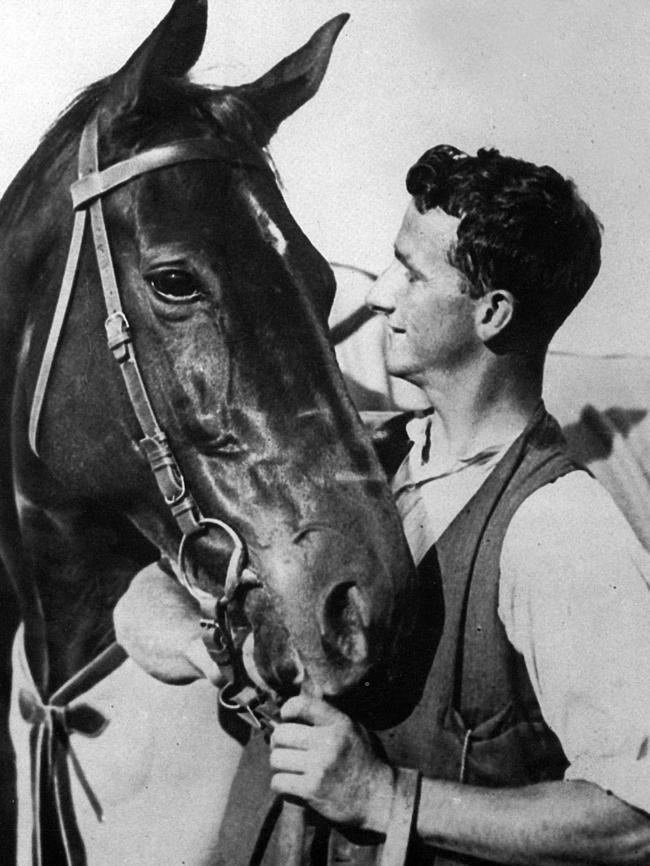
After one win from his first nine starts, Phar Lap had gone on to win 34 of his next 39 starts, his last run in Australia being a gallant eighth in the 1931 Melbourne Cup carrying 68kg, after Woodcock despaired of the hard training tactics of Telford.
The message was simple. Phar Lap would be weighted out of all handicaps.
Davis looked further afield and the Agua Caliente Jockey Club was ready with the right sort of carrot. A $100,000 (A20,000) pot, the richest race in the world, to be held in Mexico. Davis couldn’t say yes quick enough.
But not so Telford, who had other horses to tend. When he declined the trip, Davis was left with another easy task and appointed Woodcock his champ’s new trainer.
The horse’s final glory was not without anxious moments. For a while the race was in doubt and then the “Red Terror” or “Anzac Antelope” (as the Americans called him) had a hoof operation.
Things looked bleak when Phar Lap trailed by 10 lengths after the crack field had gone six furlongs (1200m) of the 10-furlong (2000m) race. But then he sprouted wings.
“Of all the famous sprints Phar Lap has ever made, that two furlongs from the six furlongs to the half mile was his greatest. He ran the journey in 22 seconds and when he arrived at the half mile he had left the field astern,” said famous Australian turf writer Bert Wolfe.
Phar Lap was given a hero’s welcome. King George V cabled his best wishes.
US newspapers said the Australian champ made US trainers and jockeys look like “suckers”.
The adulation was still reverberating around the world when the great horse died suddenly and mysteriously at Menlo Park in California.
Such was his fame, one Sydney newspaper produced the simple poster banner: “He’s dead”.
LEGEND IN LIFE AND DEATH
WAS it the work of the Mafia, an anti-horse racing zealot, a jealous rival American trainer or even poor Tommy Woodcock?
Just who was responsible for the death of Australia’s greatest four-legged hero?
It’s a question that has been asked again and again since the death of Phar Lap in 1932, a question that haunted Woodcock for the rest of his life, a question that will never be satisfactorily answered.
Medical opinion was divided at the time. Cause of death was most likely severe colic or poisoning, with locals pointing to the fact that trees on the property where Phar Lap was stabled in California had been sprayed with arsenic.
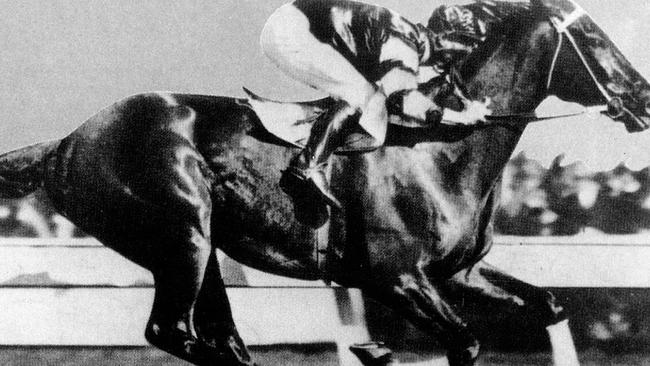
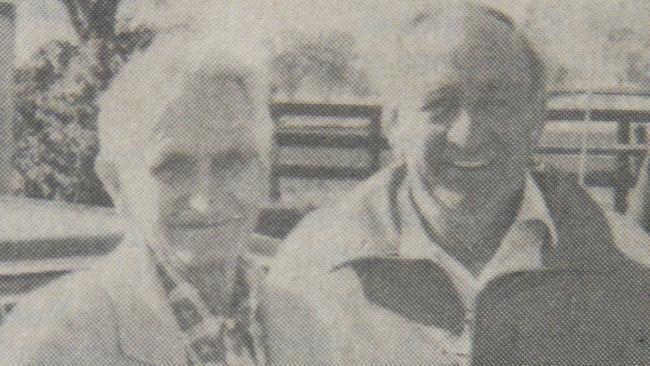
But Woodcock disputed both findings. Phar Lap had been fed by hand, he said, and he knew enough about colic to know that something else killed his horse.
He made the mistake of saying he reckoned he knew what killed his mate and was hounded for his efforts, but years passed and Woodcock’s silence suggested he had no answers, just a heavy heart from losing something so dear.
Others in the game looked for the devious.
The Mafia controlled much of racing in the US and were said to be upset with Big Red’s victory at Agua Caliente.
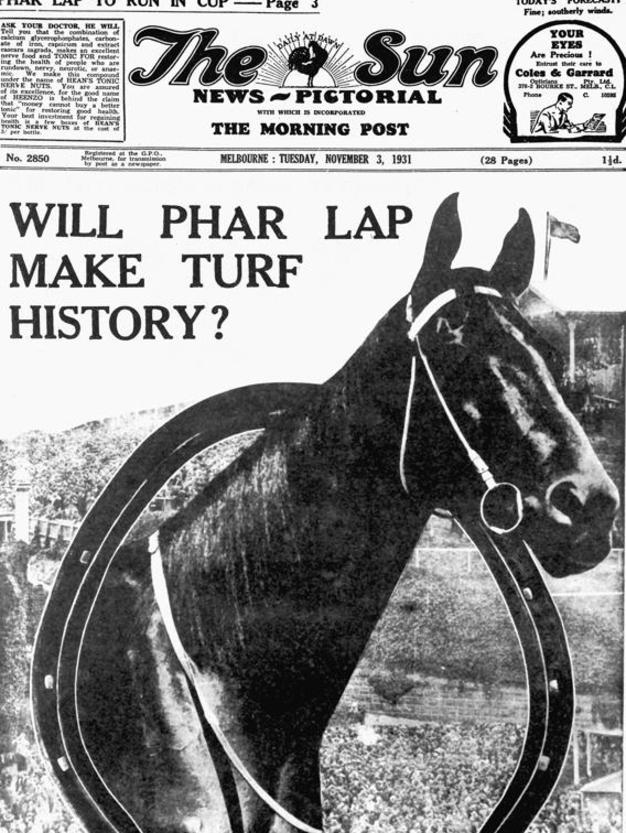
In Australia, journalists were happy to suggest it was the work of jealous Yanks, but no proof emerged to support such outlandish claims.
It all just added to the allure of the Phar Lap legend.
In death, his greatness grew and grew.
His heart was found to weigh almost twice that of a normal thoroughbred (6.2kg).
He was larger than life all right.
His hide was stuffed on the orders of his owner and ended up at Museum Victoria in Elizabeth St, to be worshipped by generations of admirers.
His heart went to Canberra, his skeleton to Wellington.
And his story was told from Darwin to Devonport.
A version of this story first appeared in the Herald Sun in 1999.


